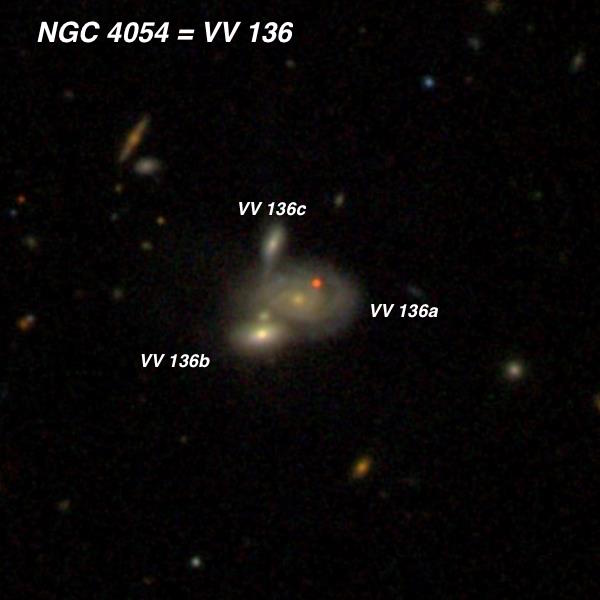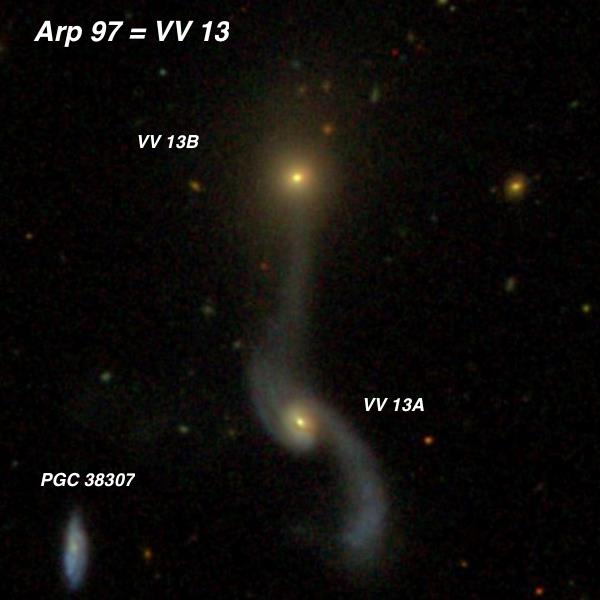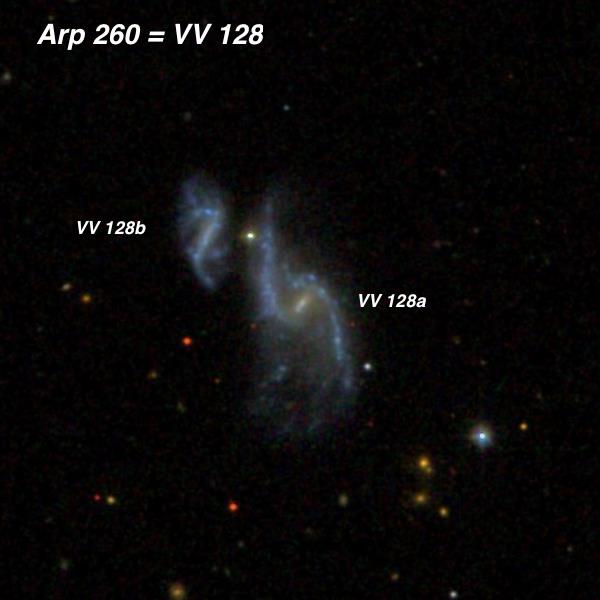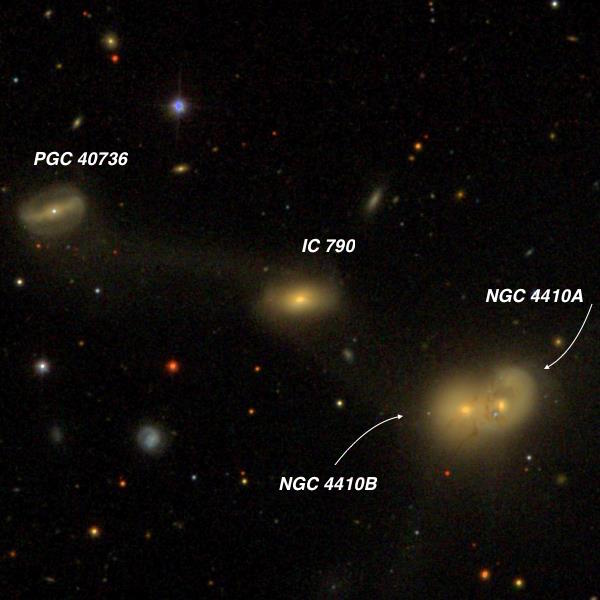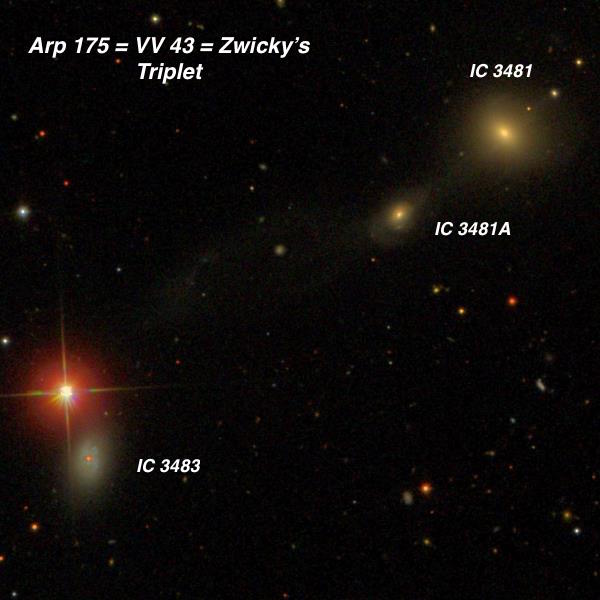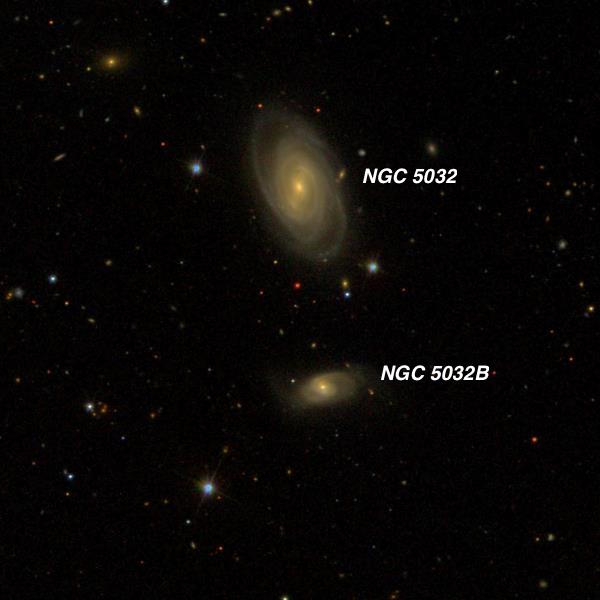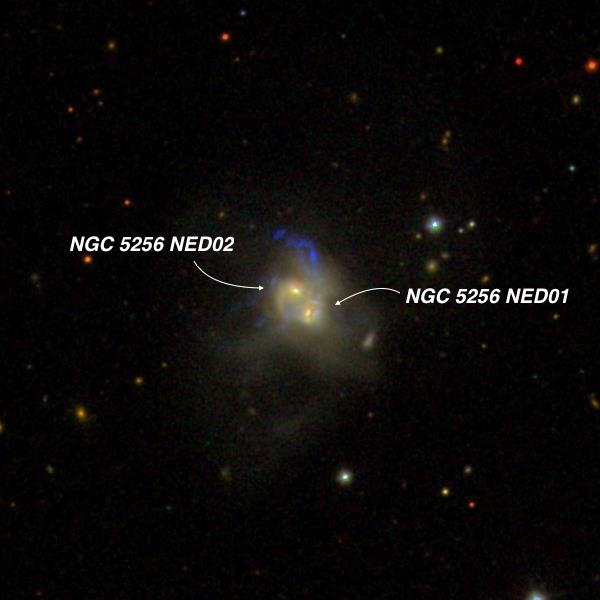OR: In Search of Interacting Galaxies -- 6 June 2016
by Steve Gottlieb
|
The 3000-ft elevation observing site is in the southern section of the Diablo range, probably best known for Mt Hamilton, Mt. Diablo and San Benito Mountain. My drive from Berkeley opened up south of San Jose on Highway 101, turning into farmland and ranches after the Gilroy turnoff to Hollister. Once leaving Hollister on Highway 25 (which leads to Pinnacles National Monument), it’s all wide open rolling hills through the tiny town of Tres Pinos to Paicines. The last stretch is down Panoche Road, which eventually narrows into a winding canyon road towards Willow Springs. At the turnoff to the Willow Springs area, I met the three Marks who had arrived a bit earlier. I was also greeted by the sight of crimson-tinged smoke clouds to the west, which looked quite ominous. I later learned, this was from the Coleman Fire, which started earlier in the day in southern Monterey County, just north of Fort Hunter Liggett. Although we were concerned about the possibility of smoke and fire, we decided to drive up to the observing site. Fortunately, the smoke seemed to stay to the west of us, perhaps due to a change in the direction of the winds, and conditions were quite dark all night (SQM readings of 21.7+). Observing with my 24-inch f/3.7 Starstructure, I continued to track down little-known interacting galaxies as well as post-merger pairs with double nuclei (see report from
Memorial Day). Starting at the end of astronomical twilight (now nearly 10:30) until roughly 3:30 AM, I took notes on over 50 objects. Near the end of the evening, Mark McCarthy and
I shared views of the Hercules Galaxy Cluster, which I wrote about in the Going Deep column for the July issue of Sky & Tel. Another great evening under the stars. Next up is the
Golden State Star Party in a couple of weeks. — Steve Gottlieb
|
|
Arp 194 consists of UGC 6945a = Arp placed this system in his category Galaxies (not classifiable as S or E) with material ejected from nuclei. The SDSS image reveals A 2003 paper titled "Evidence of tidal stripping of gas and cross-fueling" described the system as following:
At 322x the western and largest component ( The redshifts of these three galaxies are nearly identical, so it apparently forms a physical (interacting?) triplet. Surprisingly, there is very little known about this system as it has not been studied.
The redshift-based distance of this trio is roughly 325 million l.y. Although the system is known as Arp 97, it was first catalogued by Russian astronomer Boris
Vorontsov-Velyaminov in his 1959 “Atlas and Catalogue of Interacting Galaxies”. I wrote about several galaxies in the VV catalogue in the September 2014 issue of Sky and Telescope.
The article is titled “Seeking Interacting Galaxies”.
I reobserved this pair of interacting galaxies (also viewed the previous Monday night) to confirm the sighting of The previous Monday night (May 30), VV 128a was logged as faint, fairly small, elongated ~2:1 SSW-NNE, 0.8'x0.4', irregular surface brightness, slightly brighter core.
Occasionally a 16th mag star was seen at the northeast end (0.4' from center). A mag 15.3 star is 1' SW. The redshift-based distance for this pair is also ~325 million light years. You’ll find this blue pair (indicating ongoing massive star formation) in Coma Berenices, a little
over a degree north of
As this trio is connected by tidal bridges, it’s surprising it was missed by both Arp and Vorontsov-Velyaminov. NGC 4410 is a merged, interacting pair at 20"
separation within a common halo. A 2002 study states "The NGC 4410 group of galaxies provides us with a rare opportunity to study a nearby example of a radio galaxy (NGC 4410A) embedded in an extended X-ray source, with evidence for star formation that can be readily spatially distinguished from regions dominated by the active galactic nucleus and shocks.”
IC 3481 appeared fairly faint to moderately bright, small, round, fairly high surface brightness, 20" diameter, fairly bright stellar nucleus. Based on my size
estimate, I only noticed the bright core region. IC 3481 is the first of three in a linear trio with On deep images, IC 3481 and 3481A are connected by a tidal plume and a huge arcing tail from IC 3481A reaches about 2/3 of the way to IC 3483. This apparent interaction was discovered by Caltech astronomer Fritz Zwicky before 1952 on an early Palomar 48-inch Schmidt plate. He assumed all three galaxies had experienced a close encounter, disrupted one another, and gas and stars had been ejected into space. But IC 3483 has a very low recessional velocity, so only IC 3481 and IC 3481 form an interacting pair. More on Zwicky’s discoveries can be found in his 1956 paper “Multiple Galaxies” at http://articles.adsabs.harvard.edu/full/1956ErNW...29..344Z. The nickname “Zwicky’s Triplet” is also applied to other connected systems described by Zwicky.
At 322x NGC 4519 appeared bright, large, slightly elongated 5:4 SW-NE, at least 1.5'x1.2’. It contains a relatively large brighter core. The halo is noticeably
mottled with an uneven surface brightness (probably due to HII knots in the arms). The large spiral forms a pair with These Virgo cluster members have a similar redshift so probably form a physical pair, but there is no obvious sign of any interaction abnormalities.
The two close components ( This pair resides at a redshift-based distance of nearly 500 million light years. It forms the southern vertex of an isosceles triangle with bright galaxies
Using 375x the large spiral appeared moderately bright and large, oval 3:2 ~N-S, 1.2'x0.8'. Contains a bright elongated core or bar and a small bright nucleus. A mag 14 star is 1.2' E and a slightly fainter star is 1.3' SW. It was easy to locate just 21' ESE of mag 4.3 Beta Comae.
NGC 5214, a face-on spiral, is fairly faint to moderately bright, slightly elongated NW-SE, 45"x35", very small bright core. Mag 9.9 In 2014, NGC 5214 hosted the type-Ia supernova SN 2014bb. The light-travel time for this pair is ~370 million years.
This galactic train wreck appeared fairly faint to moderately bright, fairly small, elongated 4:3 SW-NE, 40"x30", brighter ill-defined core, uneven surface brightness. Occasionally, a brighter quasi-stellar knot (nucleus of the merged companion) would pop on the northeast end of the glow! HJ 2667, a wide pair (14") of mag 11 stars, lies 5.6' WSW. This colliding galactic pair consists of a Seyfert 2 nucleus to the southwest and a LINER nucleus (low ionization nuclear emission-line region) to the northeast. The system is also classified as a LIRG (Luminous Infrared Galaxy) and has been well studied in X-ray, radio and infrared wavelengths, with 304 references in NED (Nasa-IPAC Extragalactic Database).
This appears to be another post-merger system with two nuclei though it could be a single highly disrupted system. The general glow is moderately bright, irregularly round, fairly small, 0.7'x0.6', mottled or uneven surface brightness but no distinct core. Situated at the midpoint of a mag 11.8 star 1.9' NNW and a mag 13.7 2.0' SSW. NGC 5144 probably has a merged companion at the south edge, catalogued as NGC 5144 NED01 as well as as
|

